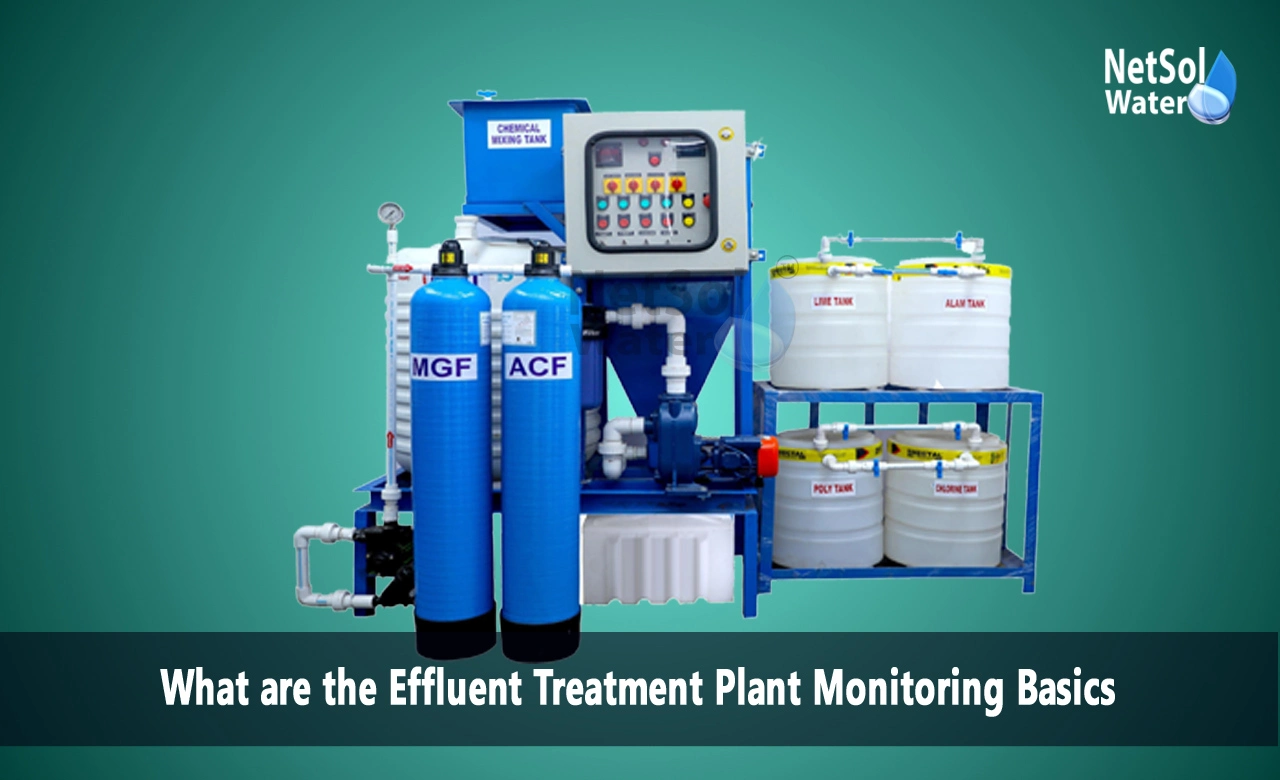What are the Effluent Treatment Plant Monitoring Basics?
Effluent treatment plants protect our environment from dangerous pollutants. These facilities process wastewater from diverse sources before releasing it back into nature. We need to monitor these plants adequately to ensure they function effectively and fulfil regulatory standards. We will address the fundamentals of effluent treatment plant monitoring covering essential aspects methodologies and best practices.
Effluent Treatment
We must know what wastewater treatment entails before getting into monitoring. Effluent refers to liquid waste or sewage discharged into water bodies. Treatment plants remove impurities from this wastewater making it safe for release. The method normally involves numerous steps including physical chemical and biological treatments.
Key Parameters to Monitor
Monitoring an effluent treatment facility includes tracking numerous metrics. These indicators let us analyze the plants performance and the quality of treated water. We monitor various crucial metrics including:
1. pH Level: We measure the pH level to identify the acidity or alkalinity of the effluent. Maintaining a steady pH protects aquatic life. Most treatment plants aim for a pH range between 6 and 9.
2. Biochemical Oxygen Demand
BOD informs us how much oxygen microorganisms require to break down organic materials in the water. High BOD levels indicate a high concentration of biodegradable compounds which can decrease oxygen in receiving water bodies.
3. Chemical Oxygen Demand
We use COD to estimate the oxygen required to oxidize all organic components in the water. It provides a fuller picture of organic pollution compared to BOD.
4. Total Suspended Solids
TSS refers to particles that remain suspended in water. High TSS can make water hazy restrict light penetration and potentially destroy aquatic ecosystems.
5. Dissolved Oxygen
We monitor DO levels to ensure the treated effluent includes adequate oxygen to support ecosystems in receiving water bodies.
Monitoring Techniques and Equipment
We employ a combination of approaches and specialized equipment for effective monitoring. Here are some common approaches:
Online Monitoring Systems
These devices deliver real-time data on many aspects. They employ sensors and analyzers to continuously measure and communicate information. We can promptly notice any deviations from typical operating parameters with online monitoring.
Laboratory Testing
We augment online monitoring with regular laboratory analysis. It entails collecting samples and running extensive tests to analyze parameters that we can't measure in real-time. This approach enables a more detailed examination of effluent quality.
Visual Inspections
We do regular visual assessments to identify issues such odd odors discolouration or floating objects. These observations can often uncover flaws that automated systems might miss.
Flow Measurement
We monitor the discharge rate of wastewater to compute pollutant loads and guarantee the plant functions within its designed capacity. We employ several flow meters depending on the specific requirements of the facility.
Data Management and Reporting
Collecting data is only one of the monitoring process. We must efficiently handle and report this information. Modern wastewater treatment plants generally employ computerized systems to store analyze and generate reports from monitoring data. This helps us to examine trends discover patterns and support decision-making.
Regulatory Compliance
Effluent treatment plants must adhere to tight regulatory norms. We employ monitoring to demonstrate compliance with certain regulations. Different areas and sectors may have particular standards therefore we must stay current on relevant guidelines.
Challenges in Effluent Monitoring
Despite developments in technology monitoring wastewater treatment facilities comes with hurdles. We face certain common difficulties including:
1. Equipment Maintenance
We must periodically maintain monitoring equipment to ensure accuracy. Neglecting this can lead to inaccurate readings and potentially non-compliance.
2. Interference from Contaminants
Certain contaminants can interfere with monitoring equipment decreasing the accuracy of measurements. We need to be aware of these potential interferences and execute suitable corrective procedures.
3. Handling Variability
Effluent composition can vary greatly depending on the source and time of day. We need powerful monitoring systems to withstand these fluctuations.
4. Cost Considerations
Implementing robust monitoring systems might be expensive. We need to reconcile the necessity for extensive monitoring with budget limits.
Best Practices for Effective Monitoring
To guarantee maximum performance of wastewater treatment plant monitoring we consider these best practices:
1. Regular Calibration
We frequently calibrate monitoring equipment to preserve accuracy. This is particularly crucial for online monitoring systems.
2. Staff Training
We engage in training programs for people participating in monitoring activities. Well-trained staff can better evaluate data and respond to issues immediately.
3. Quality Assurance
We apply quality assurance techniques to validate monitoring results. This may include cross-checking between online and laboratory measurements.
4. Preventive Maintenance
We establish a preventive maintenance schedule for all monitoring equipment. This helps prevent unexpected malfunctions and guarantees consistent performance.
5. Data Backup
We periodically backup monitoring data to prevent loss of critical information. We investigate employing cloud-based systems for additional security.
Conclusion
Effective monitoring constitutes the backbone of efficient wastewater treatment plant operation. It enables environmental protection regulatory compliance and maximum plant performance. By learning the basics of monitoring applying best practices and staying current of developing trends we may help considerably to maintaining our water resources. As technology continues to improve the future of effluent treatment plant monitoring looks promise giving ever more efficient and comprehensive solutions for managing our wastewater.
To explore customised commercial RO plants, Industrial RO plants, ETP or STP solutions for your needs in your areas and nearby regions, contact Netsol Water at:
Phone: +91-965-060-8473, Email: enquiry@netsolwater.com



